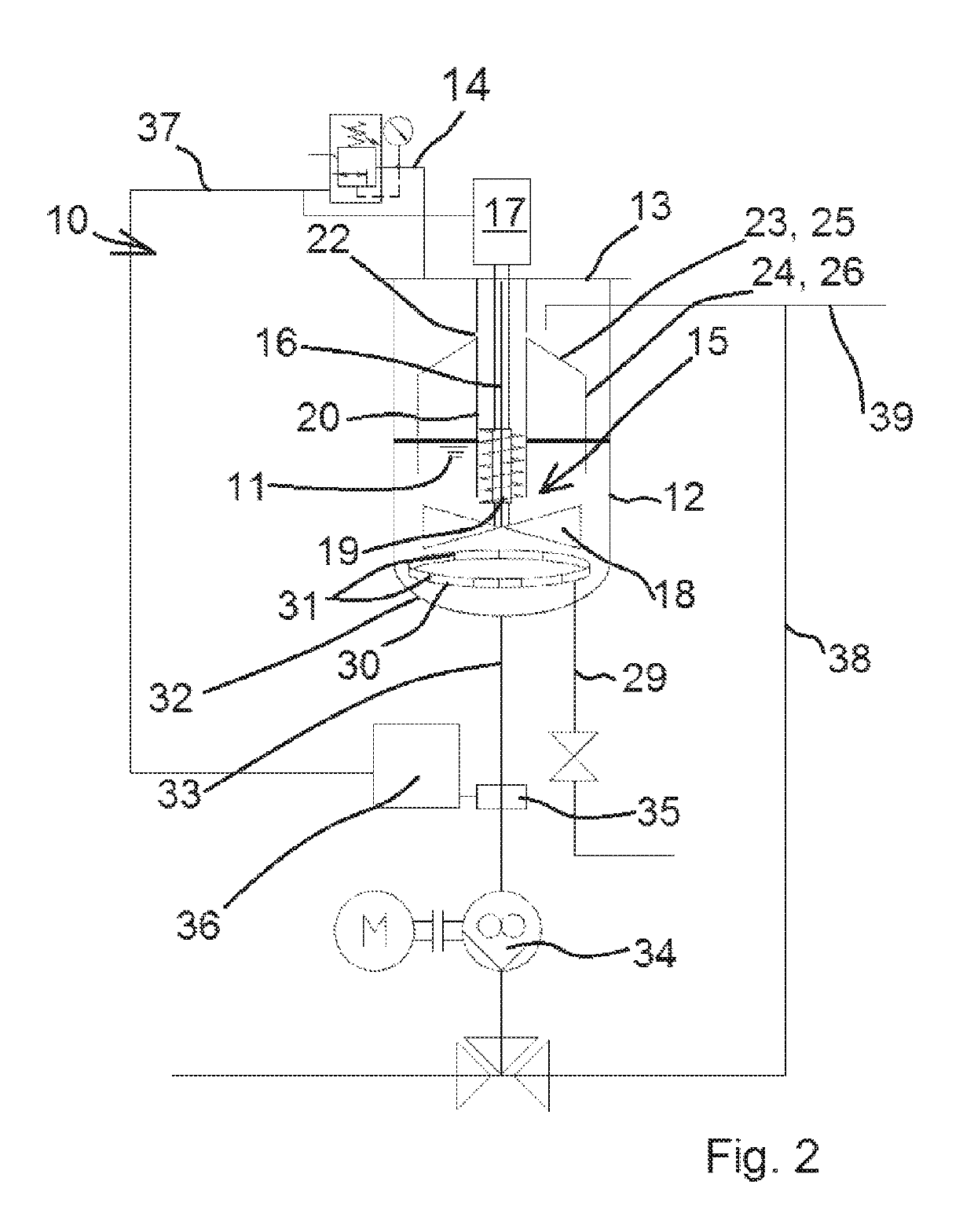Device ad method for loading a liquid with a gas
a technology of liquid loading and device ad, which is applied in the direction of transportation and packaging, rotary stirring mixer, other domestic articles, etc., to achieve the effect of convenient adjustmen
- Summary
- Abstract
- Description
- Claims
- Application Information
AI Technical Summary
Benefits of technology
Problems solved by technology
Method used
Image
Examples
Embodiment Construction
[0022]Referring now to the drawings wherein the showings are for the purpose of illustrating preferred and alternative embodiments of the invention only and not for the purpose of limiting the same, reference sign 10 designates a device in its entirety used to load a higher-viscosity liquid 11, for example a silicone material used to produce a foam gasket, with air under superatmospheric pressure. When using such sealing material, the loading with air has a considerable effect on the subsequent quality of the foam gasket, in particular its surfaces and their pore structure. In general terms, it is intended to load the liquid, in other words the raw sealing material, with air until reaching the saturation limit, without any free air bubbles being present in the liquid. The device 10 according to the invention achieves fast and even dissolution of the air in the liquid, resulting in excellent foam quality when processing the material further at a later stage.
[0023]The device 10 has a ...
PUM
| Property | Measurement | Unit |
|---|---|---|
| viscosity | aaaaa | aaaaa |
| torque | aaaaa | aaaaa |
| angle of inclination | aaaaa | aaaaa |
Abstract
Description
Claims
Application Information
 Login to View More
Login to View More - R&D
- Intellectual Property
- Life Sciences
- Materials
- Tech Scout
- Unparalleled Data Quality
- Higher Quality Content
- 60% Fewer Hallucinations
Browse by: Latest US Patents, China's latest patents, Technical Efficacy Thesaurus, Application Domain, Technology Topic, Popular Technical Reports.
© 2025 PatSnap. All rights reserved.Legal|Privacy policy|Modern Slavery Act Transparency Statement|Sitemap|About US| Contact US: help@patsnap.com


